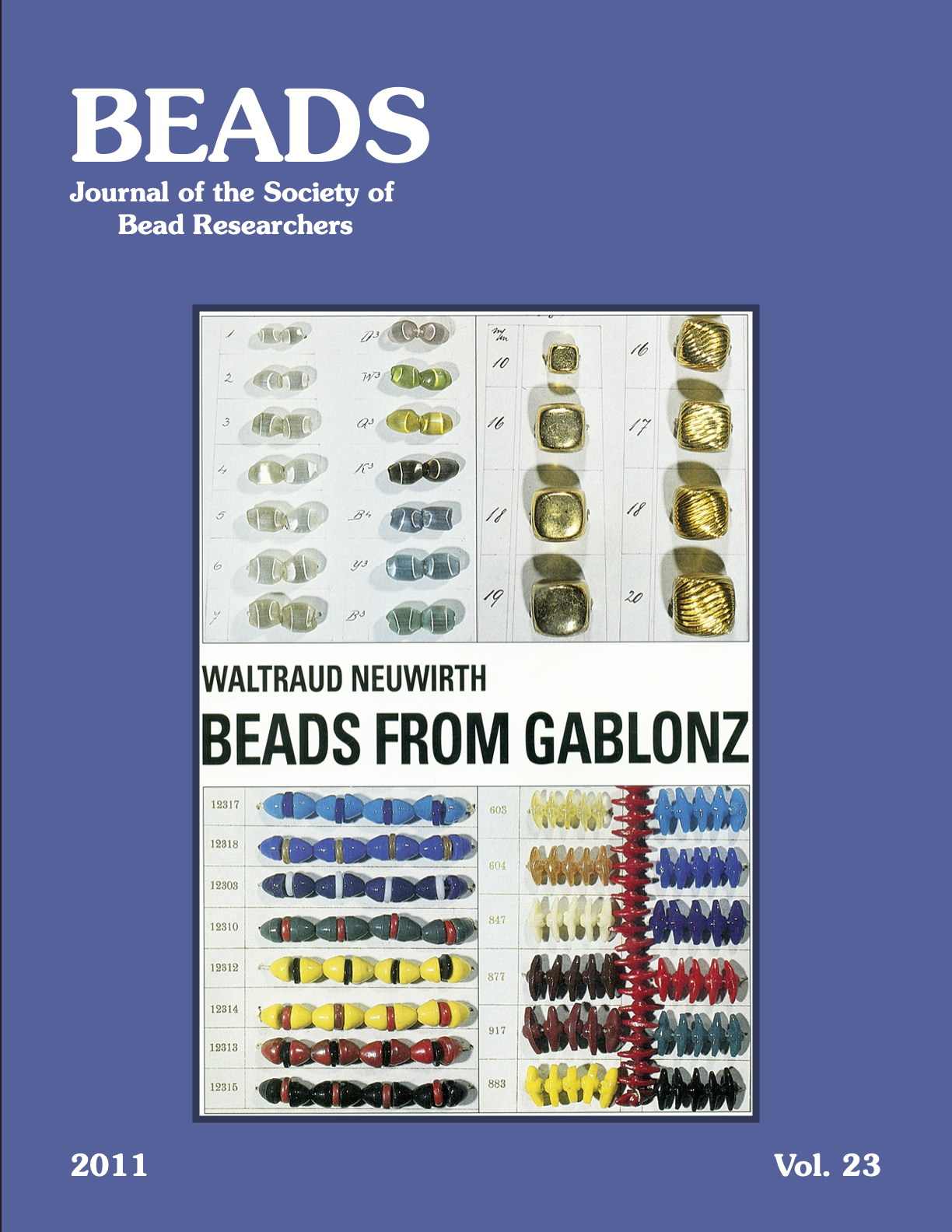Beads is published annually by the Society of Bead Researchers, a non-profit scientific-educational organization which aims to foster serious research on beads and beadwork of all materials and periods, and to expedite the dissemination of the resultant knowledge. Subscription is by membership in the Society. Membership is open to all persons involved in the study of beads, as well as those interested in keeping abreast of current trends in bead research.
This issue contains just one article, "Beads from Gablonz" by Waltraud Neuwirth, translated by Ann Dubsky. The article is available both in full and split into sections for easier reading. See the editor's note below for more information on why Beads chose to republish this study.
Editor’s note: Self-published in 1994, Dr. Waltraud Neuwirth’s book, Perlen aus Gablonz: Historismus, Jugendstil / Beads from Gablonz: Historicism, Art Nouveau, is one of the most useful publications for both bead researchers as well as bead aficionados who wish to understand the Bohemian bead industry and its products. Unfortunately, not only is this reference out of print but it is hard to find in libraries outside of Europe and impossible to purchase at a reasonable price anywhere. To make this valuable resource available to researchers and collectors around the world, Dr. Neuwirth has granted permission for the English text to be republished herein. The text essentially remains the same though the format has been changed slightly to conform to journal style. In addition, some text omitted from the initial translation has been included, a few typos have been corrected, and some problematic terminology has been clarified. To allow the color images to be published together, the illustrations have been segregated into two groups: the black-and-white images are now Figures while the color images are Plates. The editor extends his heartfelt thanks to Dr. Neuwirth and her translator, Ann Dubsky, for making this publication possible. Special thanks are also due the Bead Society of Los Angeles for a generous grant that helped with the publication of this issue.
Would you like a print copy of this issue?
A limited number of print issues are available for purchase here.
